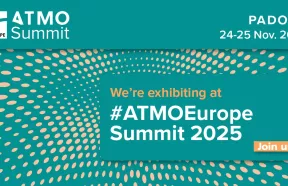This year too, GTS is proud to be among the partners and sponsors of ATMO, which recently released the 2023 edition of the ATMO Market Report on Natural Refrigerants.
The largest network that brings together stakeholders and companies to discuss all issues related to natural refrigerants. By gathering key industry players, from policy makers to manufacturers to end users, to provide a complete picture of the latest developments and future trends that you need to know.
The release of this annual report coincides with COP28 in Dubai, the first COP meeting to highlight sustainable cooling. The document aims to contribute to the conversation by providing the latest insights and data on natural refrigerant-based commercial and industrial refrigeration systems in several key markets - Europe, the United States, Canada, and Japan.
The report shows that in the past year, there has been exceptional growth in the installations of transcritical CO2 systems in both retail and industrial sites across major markets worldwide. In Europe, the leading market, as of December 2023, there were approximately 68,500 grocery stores using transcritical CO2 systems as well as 3,300 industrial sites employing this technology.
This represents a total of 71,800 transcritical CO2 sites in Europe, a 26% increase from the previous year.
The reports have also found growth in installations of low-charge ammonia systems and hydrocarbon retail cabinets in Europe and North America.
Among the drivers of natural refrigerant-based refrigeration adoption described in the report, regulatory action has played the most significant role.
In Europe, as explained in the report, the F-gas Regulation, already a major impetus for the adoption of natural refrigerants, has been updated this year, making F-gases an even less attractive option.
The EU's ongoing consideration of restrictions on PFAS, which includes HFOs, only serves to further accelerate the move towards natural refrigerants. In the United States, the rollout of the AIM Act, particularly its Technology Transitions piece, has sparked long-awaited interest in natural refrigerants by large supermarket chains.
The restrictions on refrigerants with GWP over 150 in the AIM Act have already led to considerable adoption of CO2 and hydrocarbon equipment in California, where these limits were enacted in 2020.
They are now having a similar effect at the national level. However, unlike Europe, the U.S. government has yet to establish a connection between PFAS and F-gases. In Japan, the government's natural refrigerant subsidy program has been a major driver of adoption. This report also explores the many other factors impacting the uptake of natural refrigerants, both globally and regionally.
Worldwide, technological advancements continue to make transcritical CO2 applicable in all climates and in integrated HVAC&R formats, reducing the charge levels of ammonia systems and increasing the efficiency of hydrocarbon cases.
The Report can be downloaded for free here.



